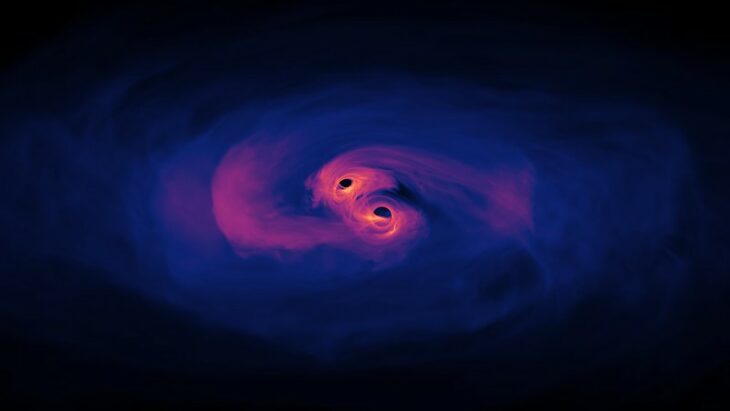When enormous objects like neutron stars and black holes merge, or when supernovae explode in the distant reaches of space, they create an end product smaller than the colliding or erupting objects. The mass they lose gets converted into energy according to Einstein’s famous equation E = mc2 and travels away in the form of contortions of space. Scientists call these contortions gravitational waves, and they can detect them indirectly by studying how the waves interfere with observations of other distant objects or directly at facilities like the Laser Interferometer Gravitational-Wave Observatory or LIGO.
Scientists working on LIGO projects found that most gravitational waves they detect came from 2 black holes merging. However, these scientists don’t know how these pairs of black holes converged. So far, they have 2 broad theories for how this happens. The first is that massive stars transform into black holes and then drift closer together due to the complex pushing and pulling of other nearby objects. These duos are called dynamically formed binary pairs. The second is that 2 massive stars start their lives in a binary pair and then transition into a pair of black holes. These duos are called primordially formed binary pairs. Scientists can’t distinguish between these 2 types of black holes using LIGO data, they can only detect if they’re merged. Therefore, they need other ways to find out how they merged.
A team of astrophysicists at Cardiff University used a series of computer simulations to test which theory for black hole mergers more likely reflects the real world. They used the astrophysical collision modeling code PETAR to see how groups or clusters of stars, including progenitors of black holes, would evolve over millions of years and what scenarios yielded black hole mergers.
The team created 35 model star clusters that varied by size, ranging from a total mass of 10,000 to 1,000,000 times the mass of the Sun over all constituent stars, how close the stars were together, and the fraction of elements in the stars that weren’t hydrogen or helium, called metallicity. They determined the sizes of specific stars in these clusters using statistical distributions, ranging from 0.08 to 150 times the mass of the Sun. Then they split each specific variation of cluster size, star density, and metallicity into 2 model versions, one where there were no primordial binary pairs and another where every star more than 20 times the size of the Sun had a binary companion.
The researchers looked for general trends in how their simulations progressed. They found that after 4 million years, the first black holes formed from the biggest stars–many were binary black holes and black hole-star pairs. In the simulations with primordially formed pairs, binary black holes formed faster, around the same time as the first black holes emerged. In the simulations with no primordially formed pairs, binary pairs still emerged through dynamic processes, but only after 10s of millions of years and at the very core of the star clusters. In both simulations, clusters ejected many of their binary black holes on a long enough timescale, and they merged shortly after.
Their final statistical analysis of the 35 model star clusters showed that unless a star cluster has no large binary stars when it forms, the majority of black hole mergers will come from primordial binary pairs. They also found no clear relationship between how big and dense a star cluster was and how many dynamic mergers it produced. Though dynamic mergers are relatively rare, they saw that how metallic a star cluster was affected how often they happened, with a very high metallicity increasing the chance of dynamic mergers by up to 3 times. They also reported a small percentage of black hole pairs that merged were part of larger groups of 3 or even 4 black holes!
The team acknowledged that their results are reliant on models of binary star evolution that remain uncertain. However, they claimed that their conclusions challenged a core assumption many astrophysicists make that most detected black hole mergers come from massive, dense star clusters. By showing that primordial binaries are the dominant source of mergers and knowing that most stars form in small clusters, they claimed that most of the LIGO detections likely come from small star clusters in the distant reaches of the universe.


